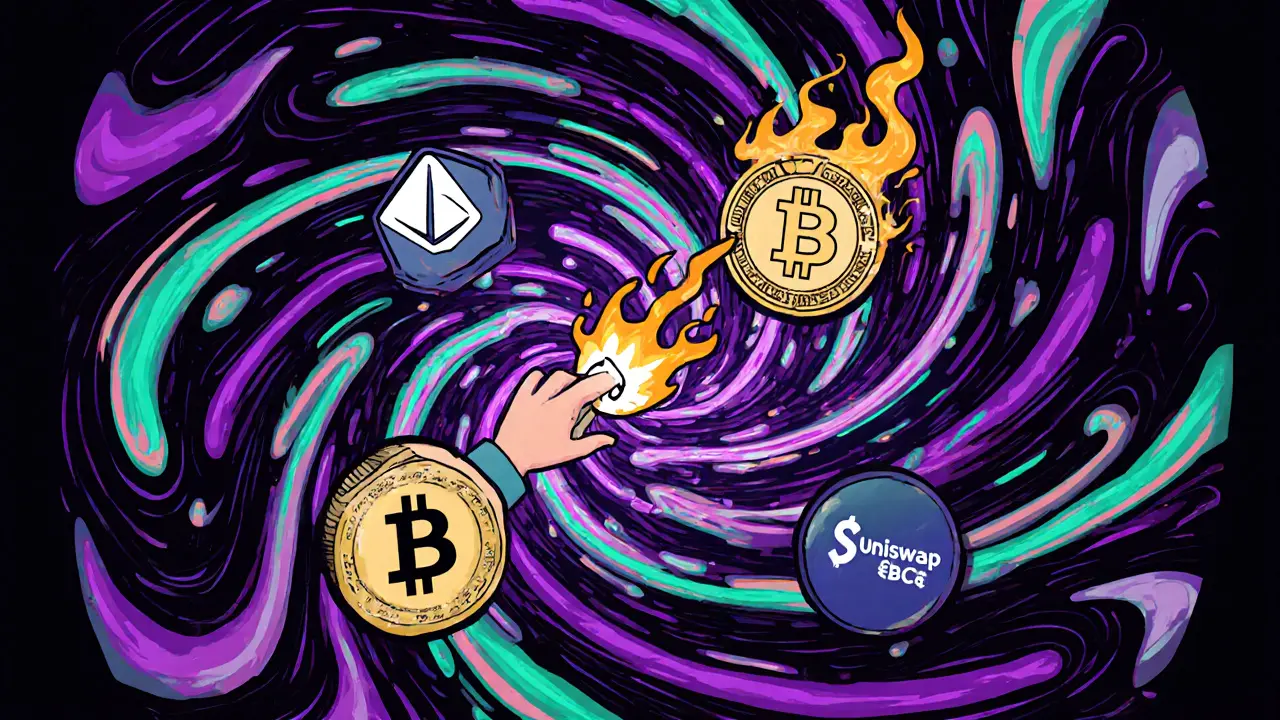Arbitrage in Crypto: How Traders Profit from Price Differences
When you buy Bitcoin for $60,000 on one exchange and immediately sell it for $60,200 on another, you’re doing arbitrage, the practice of exploiting price differences for the same asset across markets. Also known as price arbitrage, it’s one of the oldest strategies in finance—but in crypto, it’s messy, fast, and full of traps. It sounds simple: find a gap, snap it shut, collect the profit. But in reality, the gaps don’t stay open long, fees eat into margins, and exchanges can freeze withdrawals when you need them most.
Real crypto arbitrage, the act of buying and selling the same cryptocurrency across different platforms to profit from temporary price mismatches doesn’t happen on Coinbase and Binance alone. It’s often between smaller DEXs like Uniswap and decentralized platforms on Layer 2 networks, where liquidity is thin and prices lag. You’ll see it in tokens like EKTA or HGT—low-volume coins that jump 5% in seconds because one wallet dumped a large chunk on a niche exchange. But those moves are rarely profitable for humans. Most arbitrage in crypto today is done by bots running on cloud servers, tracking order books across 20+ exchanges in milliseconds. If you’re trading manually, you’re likely paying more in gas fees and slippage than you’re earning.
What makes arbitrage even trickier is decentralized exchange, a peer-to-peer platform for trading crypto without a central authority, often with delayed pricing due to low liquidity liquidity. On Uniswap v3, for example, a token might trade at $1.02 on the main pool but $1.05 on a smaller pool with only $50,000 in liquidity. You think you’ve found a win—but when you try to buy $10,000 worth, the price slippage pushes it to $1.10 before your trade fills. That’s not arbitrage. That’s a loss. And if you’re moving funds between chains—say, from Ethereum to Arbitrum—you’re also fighting withdrawal delays, bridge risks, and network congestion.
Some of the posts here show how messy this gets. You’ve got dead tokens like ELCASH and VATAN with no volume, where price spikes are just pump-and-dump noise. Then there’s the rise of tokenized real-world assets like BUIDL and EKTA, where arbitrage isn’t between exchanges—it’s between blockchain versions of the same asset, like a tokenized bond on Ethereum versus one on Polygon. And don’t forget the regulatory side: if you’re in the EU or India, moving funds across borders for arbitrage might trigger AML checks or tax reporting you didn’t expect.
So what’s left for regular traders? Not the kind of arbitrage you see in YouTube tutorials. But there are still real opportunities—if you know where to look. Smaller DEXs with low trading volume. New token launches with uneven listings. Cross-chain mispricings before the bots catch up. And sometimes, just plain luck. The posts below don’t sell you a magic formula. They show you the real data: which exchanges are still worth checking, which tokens have real price gaps, and which ones are just traps dressed up as arbitrage. You won’t get rich from this. But you might avoid losing money trying to.
Use Cases for Flash Loans in DeFi: Arbitrage, Liquidations, and More
Flash loans enable instant, collateral-free borrowing in DeFi for arbitrage, liquidations, and collateral swaps-all within a single blockchain transaction. Learn how they work and why they matter.
